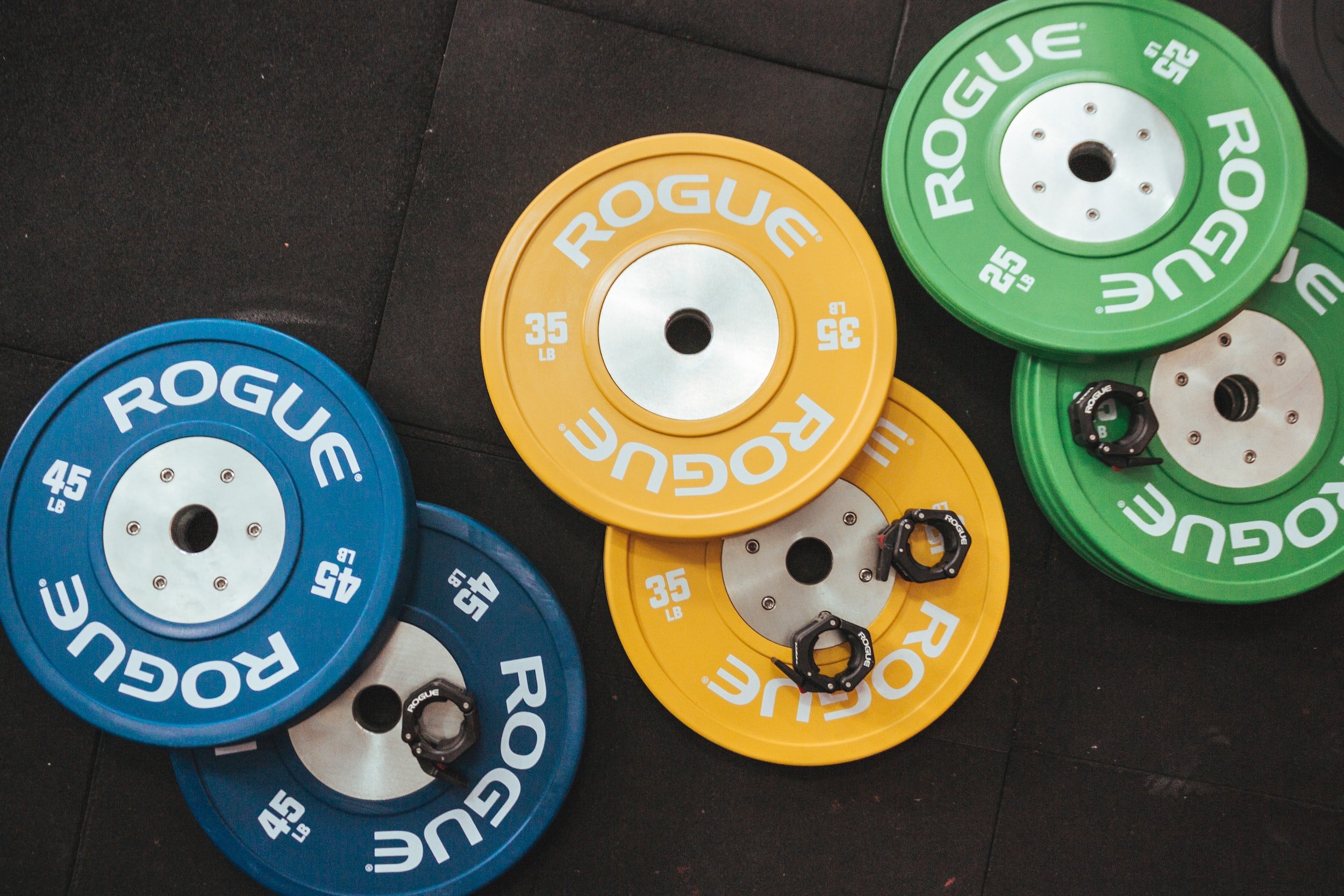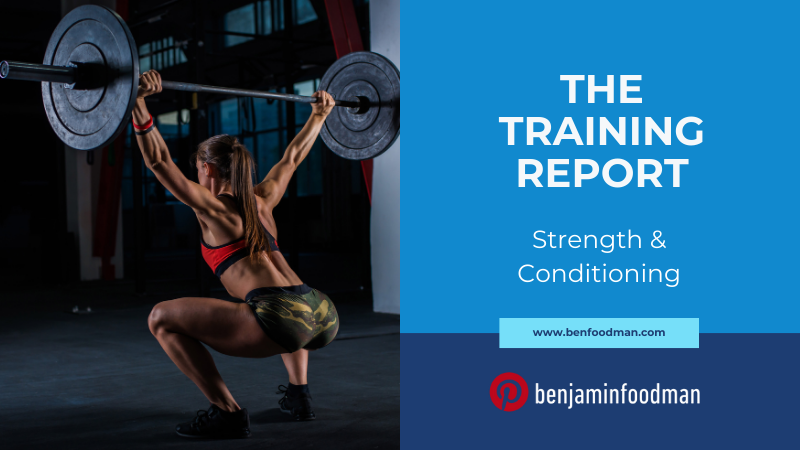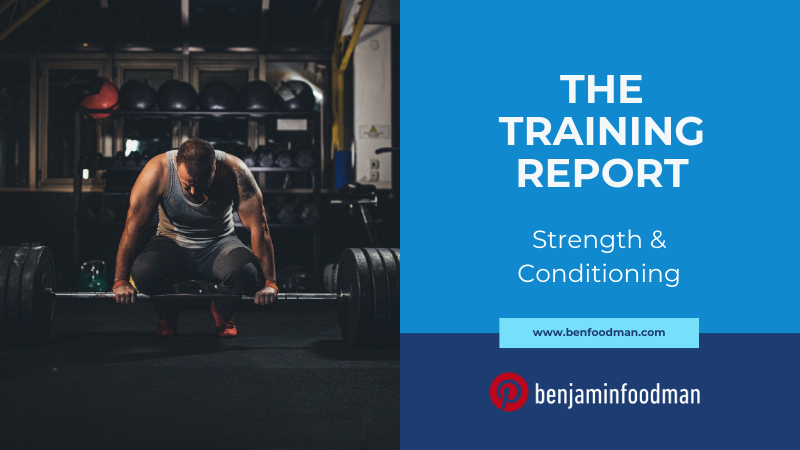Strength & Conditioning - Training For Mountaineering & Endurance Athlete Performance
About the Author
Ben Foodman is a licensed psychotherapist & performance specialist. He owns his private practice located in Charlotte North Carolina where he specializes in working with athletes to help them overcome mental blocks (the yips), PTSD, ADD / ADHD and achieve flow states through the techniques of Brainspotting & Neurofeedback. If you are interested in services, use the link here! Enjoy the article below!
Table Of Contents
Introduction: Endurance Athletes And Strength & Conditioning
Part I. Exercise Science, Bioenergetics & Endurance Athletes
Part II. Uphill Training, Strength & Conditioning And Endurance Athletes
Part III. Cardiovascular Training For Tactical & Endurance Athletes
Part IV. Training Gear & Equipment For Endurance And Tactical Athletes
Introduction: Endurance Athletes And Strength & Conditioning
One of the most challenging sport performance environments to train for are mountains. Whether you are an alpine athlete, mountain runner, a tactical athlete or ski mountaineer, you need to cultivate the perfect blend of endurance, explosive power, strength & psychological fortitude to overcome the obstacles that mountains produce. False summits, unpredictable weather patterns, and gear failure are just some of the examples of uncontrollable environmental factors that mountaineering athletes need to deal with. Factor in the need to carry your own gear for extensive distances, adhere to time controlled plans, manage physical and psychological pain, and you will have your work cut out for you. But as any mountaineering athlete will tell you, the experience of connecting with nature and testing yourself are incredible moments that are worth the price of admission.
For this Training Report I want to provide a comprehensive yet thorough summary about how to properly prepare for performance on mountains. We will review the following: physiological & biomechanical demands of mountain training; proper strength training procedures and weightlifting program design; mountaineering athlete program design; and rest and recovery strategies. We will also review special considerations such as recommended gear, sport specific training considerations, advanced sport science data points to focus on, and other relevant topics as well. Before we can get into the programming numbers, we first have to understand why we are doing what we are doing. Let’s begin by digging into the physiological demands involved with being a mountaineering athlete and preparing for the harsh mountain environment.
Part I. Exercise Science, Bioenergetics & Endurance Athletes
Depending on the specific domain of mountain sports, some of the energy demands will vary. Before we get into those demands, let’s first begin by developing an understanding of bioenergetics. Bioenergetics is a field in biochemistry and cell biology that concerns energy flow through living systems. Within humans, we will focus on the three main systems that are associated with this energy flow: phosphagen energy system; glycolytic energy system; & aerobic energy system. While all of these systems are active at all times, individually some will be more active than others during specific exercise routines. Furthermore, these systems can actually be trained to be more efficient during the desired sport performance situation yielding positive results such as increased muscle mass, endurance, speed and power. Let’s begin by reviewing each of these three systems, and what types of activities best match these system demands.
First, the phosphagen energy system (a.k.a. the ATP-PCr system) provides ATP during high intensity activities such as vertical jumping, short distance sprinting, and maximal lifting. When trying to specifically train this system in the body, certain exercises and rest periods should be prescribed to get the most out of the workout session. Exercises that are selected should include movements that are either sub-maximal or anywhere from 80-90% of a one repetition maximum. Examples of these types of exercises include power cleans, and the repetition set count should not exceed 2 reps or 5 reps. Most strength coaches tend to agree that rest between reps should be approximately 30 seconds and rest period between sets should be anywhere from 2 to 4 minutes. Again, the rest periods, repetition counts, and training load are crucial if you are trying to develop power and maximum strength gains.
The second bioenergetic pathway is Glycolysis. Glycolysis is probably one of the more common energy systems trained throughout sports competition as it is in most use for activities where both the athlete’s endurance and explosive capabilities are tested simultaneously. During Glycolysis a series of chemical reactions occur that break down glucose from the blood and glycogen from the muscle in order to provide the athlete with energy for the specific activity. Typically when athletes are training this energy system, their primary desire in doing so is to increase what is known as the lactate threshold. Athletes that can sustain high bouts of intensity and explosiveness for long periods of time have a high lactate threshold meaning that their liver converts higher quantities of lactate back into glycogen at a faster rate. When the liver is unable to sustain the continuous breakdown of lactate, an accumulation of hydrogen ions occurs and creates the ‘burn’ sensation.
Strategically speaking, mountaineering athletes will probably fall more along the spectrum of utilizing Glycolysis and the aerobic energy system (which we will cover shortly), due to the need to sustain both endurance and explosiveness for the unpredictable aspects of moving up and through mountains. This means that a combination of cardiovascular and strength training protocols should be implemented along with an emphasis on unilateral strength training exercises that match sport specific movement demands. Bilateral exercises should definitely be incorporated into programming, but research seems to suggest that mountaineering athletes need to emphasize developing balance and stability along with developing symmetry throughout the body. This combination of bilateral and unilateral strength work appears to create a synergistic effect where both categories of exercises aid the development of overall strength.
Finally, the aerobic energy system is the third system we will cover within bioenergetics. When the body has exhausted all primary energy resources within the phosphagen and glycolytic energy system, it will transition to aerobic metabolism to continue low intensity muscle twitch activity. Per the NSCA’s Essentials of Tactical Strength & Conditioning ‘the ability to function aerobically at a high level relies on the ability of the cardiorespiratory system to deliver oxygen to the muscles, coupled with the ability of the muscles to utilize oxygen to produce ATP. Therefore, we can view the adaptations to aerobic exercise as those that involve both central and peripheral adaptations’. A vast majority of mountaineering athletes experience sport specific energy demands that fall within the aerobic energy system and need to train accordingly. Now that we have a base understanding of bioenergetic systems, we need to focus on how to train those systems.
Part II. Uphill Training, Strength & Conditioning And Endurance Athletes
Even though endurance athletes that compete on the mountain tend to rely more on the aerobic energy capacity, it is still vital that they develop their strength through weight lifting protocols. In fact, research strongly suggests that even endurance athletes such as ultra runners significantly reduce the likelihood of injury as well as experience noticeable performance gains compared to endurance athletes that do not engage in strength training. While it is true that aerobic exercise inhibits an athlete’s ability to make significant gains in strength training, mountaineering athletes (especially mountaineering athletes focused on endurance) should view strength training as a support mechanism to their mountaineering endeavors rather than trying to make 1 repetition maximum gains. So with this in mind, how should mountaineering athletes focus on their strength training? By combining bilateral multi-joint exercises with unilateral exercises there appears to be a synergistic effect where both categories tend to enhance one another. Since mountaineering athletes tend to rely more on unilateral strength exercises, I recommend utilizing a 1:2 ratio of bilateral multi-join exercises to unilateral strength exercises. The following program outline is an example of what mountaineering athletes should mimic and the correct order of energy demanding exercises (explosive exercises first, endurance based exercises last):
SET I
Explosive Bilateral Exercise and/or Explosive Unilateral Exercise
SUPERSET I
Bilateral Exercise + Unilateral Exercise + Unilateral Exercise
SUPERSET II
Different Bilateral Exercise + Different Unilateral Exercise + Different Unilateral Exercise
CORE & GLUTE ISOLATION SUPERSET I
Core Exercise + Glute Exercise
CARDIOVASCULAR TRAINING
Selection between Sprint Work, Long Slow Distance Training & Recovery Runs
While understanding your program philosophy is important, efficiently picking high return exercises is just as critical for your success. For instance, what would be a more ideal exercise to select for a unilateral upper body exercise selection: single arm bicep curl or a single arm dumbbell row? The single arm dumbbell row would be a more superior selection for the following reasons: the specific exercise is more sport specific meaning that the movement of the exercise is much more similar to mountaineering athlete movements compared to bicep curls; the single arm dumbbell row not only works the bicep but also the upper back and latissimus muscle meaning that the movement is multi-joint in nature; the dumbbell row strength gains will have more transferable benefits to other exercises than the single arm bicep curl will. Let’s explore a list of ideal exercises that a mountaineering athlete can select from as it relates to the program outline above:
Make it stand out
Unilateral Work
single leg kettlebell RDL, half-kneeling kettlebell single arm shoulder press, single arm kettlebell row, single arm kettlebell bench press, single leg kettlebell step down, single arm TRX band row, single arm kettlebell clean, single arm kettlebell snatch, single arm kettlebell overhead squat, single arm kettlebell shoulder press, landmine RDL, landmine single arm press, pallof press, Turkish getups
Bilateral Work
barbell back squat, barbell front squat, clean and jerk, snatch, standing military barbell push press, flat bench press, incline bench press, supinated pull ups, pronated pull ups, barbell deadlift, hex bar deadlift, barbell rows, hang power cleans, hang power snatches, barbell jerks from the rack, barbell shrugs, barbell overhead squats with snatch grip, plyometric squat jumps, kettlebell swing
Part III. Cardiovascular Training For Tactical & Endurance Athletes
Lifting weights and strength training are undoubtedly game changers as mountaineering athletes look for advantages in their training regiment. But as all mountaineering athletes know, training the aerobic energy system is key within their performance domain. As previously mentioned, the glycolytic and aerobic energy system will require unique approaches when focusing on those training blocks. First, mountaineering athletes need to engage in two types of running activities: sprint work & long slow distance running. The goal of sprint work is to enhance the body’s capability to stay in a fast glycolytic state, meaning that the liver will have a higher threshold in its’ ability to convert high quantities of lactate back into glycogen. This will allow the athlete to push higher intensities of speed and explosiveness for longer bouts of time. Second, long slow distance training helps mountaineering athletes develop both the physical strength to stay on their feet for extended periods of time, and also clear the lactate threshold to new levels. But just as important as it is to know what the benefits are of these training modalities, it is equally important to understand that incorporating training variability will allow the body to actually make significant gains. If mountaineering athletes (or any athlete for that matter) use the same exercise and training modalities then the body will eventually plateau in performance. But if mountaineering athletes switch up their training routine they are more likely to experience gains in their performance.
There are two other important factors that mountaineering athletes also need to consider when designing their training blocks: load carriage protocols training environment/geography. First, according to the NSCA’s Essentials of Tactical Strength & Conditioning contrary to popular belief, the frequency at which mountaineering athletes need to effectively train to prepare for load carriage is not nearly as often as most people would believe. Research seems to suggest that 1-2 load carriage training sessions per month is more than adequate to help mountaineering athletes prepare to perform with carrying heavy loads of weight for long periods of time. This usually runs in contrast with the average mountaineering program design because of the misconception that mountaineering athletes need to train all the time wearing gear, but again the research strongly suggests otherwise. Finally, selecting the appropriate location to train is critical for aerobic mountaineering athlete training. Depending on where you live, there are several factors that need to be considered. First, if possible athletes will want to train on a combination of both concrete and trails. Trails obviously mimic the training environment that mountaineering athletes will spend all of their time on, and are also less punishing, but training on concrete roads offers variable training experiences and can strengthen the athletes joints when utilized appropriately. Finally, always account for altitude and recognize that if you train low, anything above 3500 feet will significantly alter your performance and will take time to adjust to.
Sprint Work e.g.
Tree blocking: 30 seconds zone 4, 30 seconds zone 2, 60 seconds zone 4, 60 seconds zone 2, 90 seconds zone 4, 90 seconds zone 2, 60 seconds zone 4, 60 seconds zone 2, 30 seconds zone 4, 30 seconds zone 2
Interval work: 30 seconds zone 4, 30 seconds zone 2 for 5 rounds
Hill sprints: steep hill ascent, 30 seconds zone 4 uphill, 30 seconds zone 2 downhill for 5 rounds
Long Slow Distance e.g.
Week 1-4: Day 1, 1 hour zone 2, Day 2, 1:15 hour zone 2, Day 3, 1:30 hour zone 2
Week 5: Intersperse 2-3 recovery run days following heavy workload runs at zone 2
Part IV. Training Gear & Equipment For Endurance And Tactical Athletes
There are many factors that can be covered when exploring mountaineering athlete training. For instance there is the obvious importance of developing an understanding of running technique/motor movement, and the importance of focusing on heart rate training as opposed to just focusing on miles. Factor in other considerations such as having a TCP (time controlled plan), contingency planning for medical emergencies when in the mountains and all of the other issues that are unique to each mountaineering sport. With that being said there are just a few more summary points I would like to highlight which includes gear selection/recommendations, rest & recovery, nutrition & hydration as well as mental skills training. Let’s start off by reviewing important gear selection considerations as well as recommendations.
Gear Selection
Selecting the right gear to both perform and train with is critical when preparing for your mountaineering performance. With that being said from both personal experience and with the athletes I have consulted with, the following are highly recommended brands to train with: Orange Mud (camel back and back packs), Salomon Trail shoes (both hiking and trail running), Coros and/or Suunto watches, MSR Guardian water purifier, Winkler Knives, Osprey and/or Arc'teryx back packs.
Rest & Recovery
Active recovery and sleep performance must be foundational elements of your programming when preparing for mountaineering training. I have written extensively about the importance of sleep in previous Training Reports. With that being said athletes should commit to a pre-performance routine before sleep, active recovery methods such as foam rolling, stretching, etc. Another recommendation I frequently make to athletes is to invest in tracking technology such as Whoop but also to keep track of self-perceived recovery performance and compare that with Whoop data.
Nutrition
Proper nutrition and hydration strategies will be paramount in your pursuit of performance excellence when training for mountaineering athletics. Fueling strategies will vary per individual and sport but there are some overlapping features that every athlete should frequently practice. Consumption of enough fluids and electrolytes is important for both health and performance. I have received positive reviews from athletes and coaches that use Tailwind for their electrolyte supplements. I have found in my conversations with different nutrition experts that athletes frequently underestimate their protein needs post performance. Many of the athletes I have spoken with gave positive reviews for the app Carbon Coach by Layne Norton and Precision Nutrition calculators.
Mental Skills Training
Mental skills training can make an enormous difference in regards to both psychological performance and injury recovery. One form of meditation that I strongly encourage athletes to practice is 1:2 ratio diaphragmatic breathing, or activation of the Oculo-cardiac reflex. Both of these techniques place the athlete in a higher parasympathetic nervous system activation which increases the odds of the athlete being in a more physically relaxed state enhancing the chances of recovery. I also recommend athletes regularly practice positive imagery and goal setting to help improve morale and stay in the moment for when setbacks occur (e.g. unexpected weather, false summits, injuries, etc.).
Note To Reader:
If you are an athlete reading this segment of the TRAINING REPORT, hopefully this content was helpful! I put the Training Report together because I felt like many of the discussions on issues such as the Yips/mental blocks, strength training & other subject matter on athlete performance concepts were really missing the mark on these ideas (e.g. how trauma is the direct cause of the Yips). If you are interested in learning more, make sure to subscribe below for when I put out new content on issues related to sport psychology & athlete performance! Also, if you are looking to work with a mental performance specialist, you are in the right place! USE THIS LINK to reach out to me to see if my services are the right fit for your goals!
ARE YOU ON THE LIST?
Make sure you’re signed up to Ben’s mailing list to receive news & updates on new strategies in sport psychology, upcoming workshops & products. Don’t wait, sign up now!



































